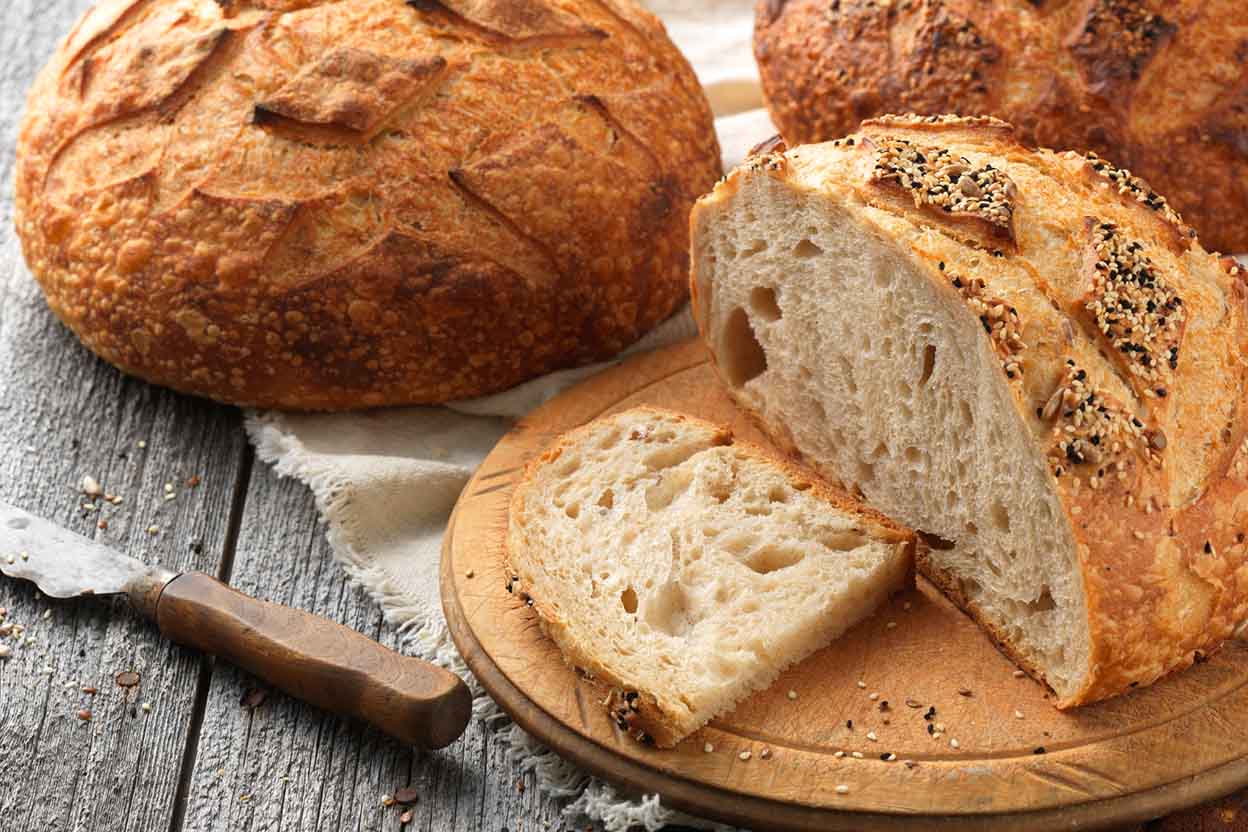Starter
The preparation of sourdough begins with a pre-ferment (the "starter" or "leaven," also known as the "chief," "chef," "head," "mother" or "sponge"), a fermented mixture of flour and water, containing a colony of microorganisms including wild yeast and lactobacilli. The purpose of the starter is to produce a vigorous leaven and to develop the flavour of the bread. In practice there are several kinds of starters, as the ratio of water to flour in the starter (hydration) varies. A starter may be a liquid batter or a stiff dough.
Flour naturally contains a variety of yeasts and bacterial spores. When wheat flour comes into contact with water, the naturally occurring enzyme amylase breaks down the starch into the sugars glucose and maltose, which sourdough's natural yeast can metabolize. With sufficient time, temperature, and refreshments with new or fresh dough, the mixture develops a stable culture. This culture will cause a dough to rise if the gluten has been developed sufficiently. The bacteria ferment starches that the yeast cannot metabolise, and the byproducts, chiefly maltose, are metabolised by the yeast which produces carbon dioxide gas, leavening the dough.
Obtaining a satisfactory rise from sourdough takes longer than a dough leavened with baker's yeast because the yeast in a sourdough is less vigorous. In the presence of lactic acid bacteria, however, some sourdough yeasts have been observed to produce twice the gas of baker's yeast. The acidic conditions in sourdough, along with the bacteria also producing enzymes that break down proteins, result in weaker gluten and may produce a denser finished product.

Baking
The starter is mixed with flour and water to make a final dough of the desired consistency. The starter weight is usually 13% to 25% of the total flour weight, though formulas may vary. The dough is shaped into loaves, left to rise, and then baked. A number of 'no knead' methods are available for sourdough bread. Due to the length of time sourdough bread takes to proof, many bakers may refrigerate their loaves prior to baking. This process is known as 'retardation' to slow down the proofing process. This process has the added benefit of developing a richer flavoured bread.
Because the rise time of most sourdough starters is longer than that of breads made with baker's yeasts, sourdough starters are generally unsuitable for use in a bread machine. However, sourdough that has been proved over many hours, using a sourdough starter or mother dough, can then be transferred to the machine, utilizing only the baking segment of the bread-making program, bypassing timed mechanical kneading by the machine's paddle. This may be convenient for single loaf production, but the complex blistered and slashed crust characteristics of oven-baked sourdough bread cannot be achieved in a bread making machine, as this usually requires the use of a baking stone in the oven and misting of the dough to produce steam. Furthermore, ideal crust development requires loaves of shapes not achievable in a machine's loaf tin.